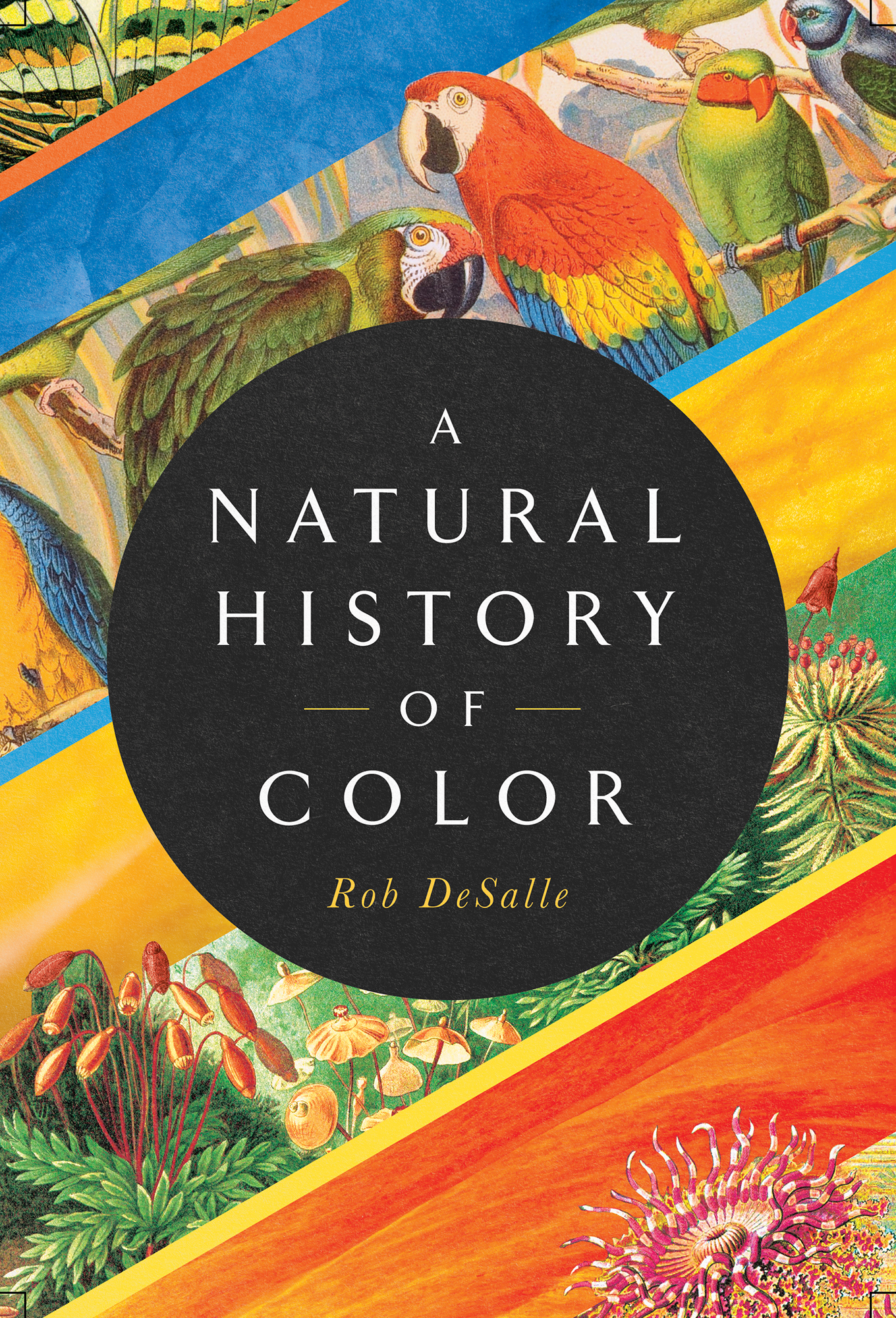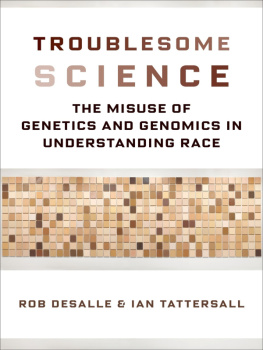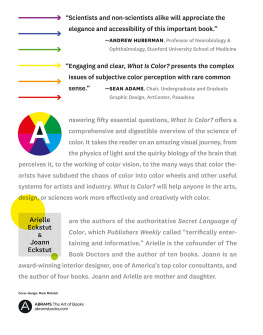Rob DeSalle - A Natural History of Color: The Science Behind What We See and How We See it
Here you can read online Rob DeSalle - A Natural History of Color: The Science Behind What We See and How We See it full text of the book (entire story) in english for free. Download pdf and epub, get meaning, cover and reviews about this ebook. year: 2020, publisher: Pegasus Books, genre: Children. Description of the work, (preface) as well as reviews are available. Best literature library LitArk.com created for fans of good reading and offers a wide selection of genres:
Romance novel
Science fiction
Adventure
Detective
Science
History
Home and family
Prose
Art
Politics
Computer
Non-fiction
Religion
Business
Children
Humor
Choose a favorite category and find really read worthwhile books. Enjoy immersion in the world of imagination, feel the emotions of the characters or learn something new for yourself, make an fascinating discovery.

- Book:A Natural History of Color: The Science Behind What We See and How We See it
- Author:
- Publisher:Pegasus Books
- Genre:
- Year:2020
- Rating:5 / 5
- Favourites:Add to favourites
- Your mark:
- 100
- 1
- 2
- 3
- 4
- 5
A Natural History of Color: The Science Behind What We See and How We See it: summary, description and annotation
We offer to read an annotation, description, summary or preface (depends on what the author of the book "A Natural History of Color: The Science Behind What We See and How We See it" wrote himself). If you haven't found the necessary information about the book — write in the comments, we will try to find it.
A Natural History of Color: The Science Behind What We See and How We See it — read online for free the complete book (whole text) full work
Below is the text of the book, divided by pages. System saving the place of the last page read, allows you to conveniently read the book "A Natural History of Color: The Science Behind What We See and How We See it" online for free, without having to search again every time where you left off. Put a bookmark, and you can go to the page where you finished reading at any time.
Font size:
Interval:
Bookmark:


A NATURAL HISTORY OF COLOR
Pegasus Books Ltd.
148 W. 37th Street, 13th Floor
New York, NY 10018
Copyright 2020 by Rob DeSalle and Hans Bachor
First Pegasus Books edition July 2020
Interior design by Maria Fernandez
Cover design by Faceout Studio, Lindy Martin
Jacket imagery by Alamy, Stocksy, & Shutterstock
All rights reserved. No part of this book may be reproduced in whole or in part without written permission from the publisher, except by reviewers who may quote brief excerpts in connection with a review in a newspaper, magazine, or electronic publication; nor may any part of this book be reproduced, stored in a retrieval system, or transmitted in any form or by any means electronic, mechanical, photocopying, recording, or other, without written permission from the publisher.
Library of Congress Cataloging-in-Publication Data is available.
ISBN: 978-1-64313-442-0
ISBN: 978-1-64313-443-7 (ebook)
Distributed by Simon & Schuster
www.pegasusbooks.us
To RDs children, Mimi, Soso, and Bo
and all of the kids in the World.
May they enjoy the colorful world they were born into
for all of their lives.
C olor influences everything. Our universe is made up of elements that have diverse color; hence the large bodies in the universe have color. Color abounds on our planet in nonliving things. The next time you see a rainbow, or get a good look at the northern lights, or experience a beautiful sunset, remember that these are colors from nonliving parts of the Earth. Organisms evolve complex coloration patterns to warn off predators, or they use subtle colors with respect to background to hide in plain sight. Humans deal with color in a very different way than other organisms. We are perhaps the only organisms on our planet that can think about, ponder, analyze, and consciously manipulate colors.
But what exactly is color? For that matter, what is black and white? (After all, black and white are colors, right?) These questions have many answers. A painter might think about the palette of colors they can use in their work; a photographer about what colors can be captured with a camera or smartphone and how to best capture that special moment and mixture of colors. Kids might wonder at a rainbow, a sunset, or a toy shop and why certain things are the colors they are. A scientist might think about the colors coming from a star or laser beam. A marketer will use color to sell a product most efficiently. A poet will describe color with words. All of this stimulates a need to understand color and, in turn, our place in the universe.
Color is paramount to the way you experience the world around you. You can customize the mood lighting in your living room, or enjoy the programmed changing colors on some modern airplanes, or change the paint color in your childrens bedroom to be more age appropriate. Color is used to influence the choices you make all the way from the grocery store to the wine shop to the art museum and the sports stadium. Color tells us what team we cheer for and what political party we prefer. Color has physical, evolutionary, social, cultural, emotional, and philosophical components. Color is almost as complex an existential concept as mortality. Color is perhaps the most complex daily neural input that humans perceive.
There is color in the objects we use, the light that reaches our eyes, the scenes we see and remember. And all this is processed by us, in our brains. That means colors are part of our way of noticing the world. Humans have picked up on color in a big way partly because we have evolved the molecular machinery to detect a thin range of light wavelengths but also because we have the ingenuity to make tools to perceive things outside our thin sliver of naturally perceived wavelengths. Color is a part of our evolutionary history written in our genes and, perhaps more importantly, in our cultures. Different colors have been instrumental in the development of the great cultures of the world. The story of how humans discovered a way to color things is a great detective story and central to the development of colors role in defining culture and in defining what humans are. Because we humans utilize color in a somewhat special way compared to the rest of the natural world, understanding what color is becomes a central question in understanding our existence.
One might argue that color began when light began. Let there be light (and colors too). But Galileo, whom we mostly remember for his astronomical exploits and near execution for heresy, pointed out that there was no hearing or vision until organisms arose that could detect sound and light. The world was both dark and soundless before the first organisms capable of light and sound detection evolved. Likewise, colors didnt exist until organisms evolved that could detect light. But this takes us back to black and white, and the idea that organisms first saw colors when they were able to discern black and white. The perception of the colors of the rainbow came later, as complex life evolved and molecular mechanisms that could split light into different wavelengths arose in nature.
The question posed above is as much a philosophical question as it is a physical, chemical, and biological one. We will establish that an understanding of color on many different levels is at the heart of learning about nature, neurobiology, individualism, and a philosophy of existence. We can pretty neatly describe the physics and biology of light and color perception, but this book will also ask questions about what it means to sense light and color.
We humansand indeed all living organismsare swimming in a world of information made up of small molecules, sound waves, gravity, and, most importantly for our story about color, light waves. Organisms have figured out how to use light in a wide range of ways, probably a result of the fact that there is a plethora, or a rainbow, so to speak, of different wavelengths of light hitting our planet. And a big part of the story is that there is also a bonanza of things for the light to bounce off of and be absorbed by.
All organisms use light to inform them of their surroundings, but some organisms also use it as food for energy. Plants and some bacteria have evolved mechanisms to extract energy from light. For these mechanisms a broad range of light wavelengths are gobbled up and transformed via biochemical pathways to produce energy for the plant and bacterial cells, whereas animals and fungi have figured out other ways to produce energy in their cells (though plants have this second mechanism too). Animals and fungi eat food to compensate for their other energy requirements, while plants do quite well by absorbing nutrients and through their use of light. So, light to some organisms is food and to others a source of information. And color is one way that organisms have evolved to stretch the utility of light wave information that they are exposed to.
We humans have a stake in cutting through the information flooding us from the environment, but we have somewhat uniquely reduced the evolutionary severity of consequences of faulty or slowed processing of this information. For instance, it is absolutely imperative that a small mammal or bird in a forest process visual information nearly instantaneously and with great accuracy to ensure its survival. Today most humans simply need to know, for instance, that red at a stoplight means stop and green means go in order for them to survive an intersection. How this evolutionary give-and-take works in our species and in others is foundational to understanding color.
Font size:
Interval:
Bookmark:
Similar books «A Natural History of Color: The Science Behind What We See and How We See it»
Look at similar books to A Natural History of Color: The Science Behind What We See and How We See it. We have selected literature similar in name and meaning in the hope of providing readers with more options to find new, interesting, not yet read works.
Discussion, reviews of the book A Natural History of Color: The Science Behind What We See and How We See it and just readers' own opinions. Leave your comments, write what you think about the work, its meaning or the main characters. Specify what exactly you liked and what you didn't like, and why you think so.


